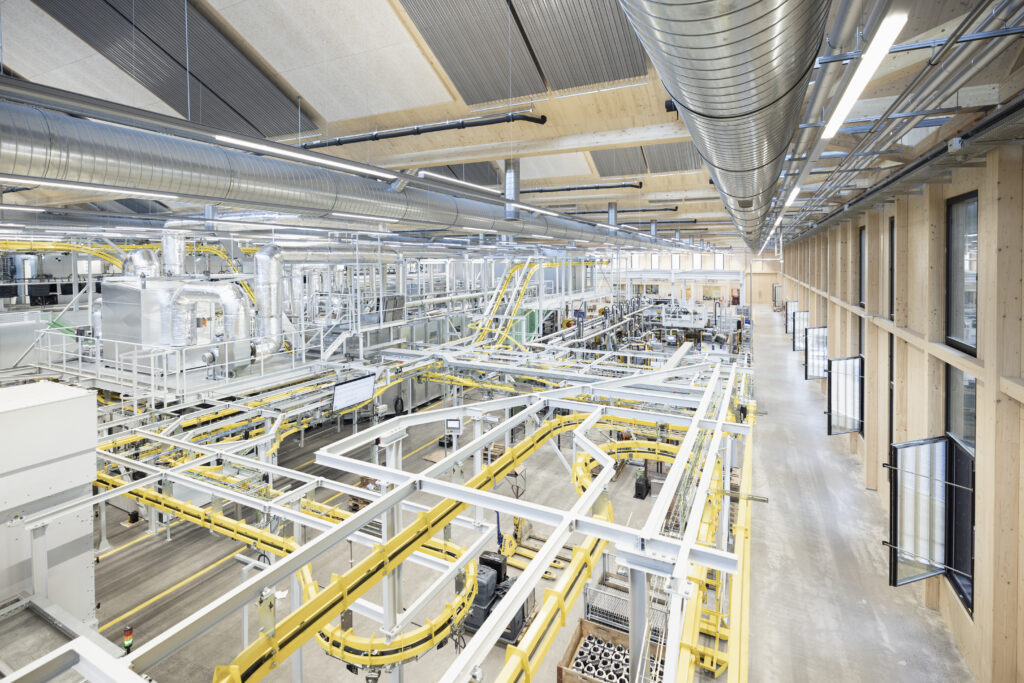Switzerland focuses on hydrogen for a CO2-free industry
On June 20, 2022, the Association for the Decarbonization of Industry, with representatives from industry, utilities, the financial sector and research, adopted a joint strategy aimed at developing holistic and rapidly implementable approaches to reducing CO2 emissions in industrial applications. The focus is on high-temperature processes and logistics, where hydrogen will play a central role, albeit with different production processes.

The list of members of the Association for the Decarbonization of Industry is extremely diverse, and although they operate in very different sectors, they want to work together to achieve a rapid and global reduction in CO2 emissions in industrial applications. In addition to the founding members Tech Cluster Zug, the regional energy and water supplier WWZ and Empa, these are the household appliance manufacturer V-ZUG, the industrial group Metall Zug AG, the recycling company AVAG, the pyrolysis plant manufacturer XGas Swiss and the private asset manager Partners Group, Accelleron Industries, the turbocharger division of ABB, the medical technology company SHL Medical, VZ Depotbank AG, the specialty chemicals company Sika, the mobility company AMAG Group, the technology group Siemens and Holcim as a provider of construction solutions.
SWISS to be the world’s first airline to use Synhelion solar fuel
On the way to climate-neutral road traffic
Elisa Fanton: “By sanitizing the air, almost no contagion!”
Focus on a new production process for hydrogen
To decarbonize high-temperature industrial processes, the third largest energy consumers in Switzerland, a novel hydrogen production process based on the splitting of hydrogen (chemically H2) from methane (CH4) – a process called methane pyrolysis – will be applied in a planned demonstration plant in Zug. Methane is the main component of fossil natural gas and biogas, but can also be produced synthetically from renewable hydrogen and CO2. In the planned demonstrator in the Zug Tech Cluster, pyrolytically generated hydrogen is to replace fossil natural gas in V-ZUG’s enamelling furnaces, in order to demonstrate with this pilot project how such applications can be decarbonized. In parallel, the hydrogen will also be used by other industrial partners in their processes. In contrast to previous industrial hydrogen production, the pyrolysis of methane does not produce CO2 as a by-product, but solid (powdered) carbon, which is to be further developed into a resource for construction and agriculture as part of the association’s activities, for example as an admixture in building materials or enrichment of humus.
What is special about this new approach is that if synthetic methane is used instead of fossil natural gas for pyrolytic hydrogen production, this results in negative CO2 emissions! This is because more CO2 has to be removed from the atmosphere for the production of synthetic methane than is subsequently emitted trough all steps of the multi-step process. The carbon that is split off via methane pyrolysis is thus permanently removed from the atmosphere. Technologies with negative CO2 emissions are urgently needed on a large scale if Switzerland is to achieve its CO2 targets because around a quarter of the CO2 emissions generated in Switzerland today (or 10 million tons) cannot be reduced by switching to renewable energy.
In parallel to pyrolytic hydrogen production, a decentralized electrolysis plant for the electricity-based production of hydrogen from water is also to be realized. Such plants supply high-purity hydrogen, which is, for instance, required for fuel-cell-powered trucks. Water electrolysis has higher overall efficiencies than methane pyrolysis, but does not achieve as low (or even negative) CO2 emissions. In Zug, a decentralized approach for electrolysis, not tied to a power plant, is to be implemented because it avoids the ineffective distribution of hydrogen via trucks on the road. To avoid the need for decentralized power grid expansion, a “grid-serving” operating concept is to be developed in collaboration with the local power supplier, based on the utilization of free power grid capacities.

Rapid industrialization as a goal
In the field of electrolytic hydrogen production, industrialization is already advanced. Methane pyrolysis, on the other hand, is a process that has only been tested in the lab but has been widely studied scientifically and is on the threshold of industrial application. In the U.S., for example, the first large-scale carbon production plant was recently commissioned in collaboration with the tire industry. The Association for the Decarbonization of Industry is initially focusing on the use of methane pyrolysis in decentralized industrial plants connected to the gas grid. Around 50% of the high-temperature processes in Switzerland are suitable for this. With the realization of the demonstrator in Zug, the association intends to give this technology a boost for its industrialization. Thanks to their highly diverse technical backgrounds, the network partners are covering the entire value chain.
Quelle: Empa Communication





